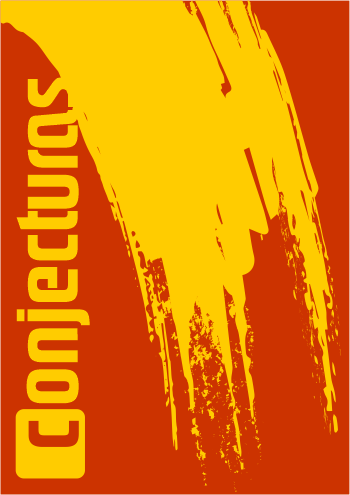Prevalence of androgen deficiency in aging male in an outpatient population and effects of testosterone gel reposition therapy
DOI:
https://doi.org/10.53660/CONJ-216-707Palavras-chave:
Androgen deficiency, Aging male, Obesity, TestosteroneResumo
Background: Androgen deficiency in aging male (ADAM) is characterized by hypogonadism with symptoms such as reduced sexual desire, muscle mass loss, among others. The treatment with testosterone gel and the results around weight and other indicators are the research objects. Objective: Analysis of association between ADAM and obesity in the outpatient population studied and to verify the outcomes of the testosterone gel treatment. Materials & Methods: From a group of 126 outpatients of University Hospital Mário Palmério, 40 were selected with total testosterone lower than 300ng/dL, upon the signature of written informed consent form and the realization of laboratory tests. After new testosterone dosage and urologic evaluation, 6 patients were treated for an average time of 6 months. Initially the dosage was 50 mg/day, with medical consultations and laboratory tests to verify the effects and to adjust the dosage. The variables analyzed were BMI, abdominal circumference, weight, muscle mass, body and visceral fat, in addition to testosterone serum dosages, lipid profile, amongst others, considering the test t among the beginning and end of treatment, defining the significance level by p<0,05. Results: Significant increase of total testosterone levels (p<0,001) and a tendency of improvement in the free testosterone levels (p=0,061) and no significant reduction of BMI (p=0,4308), abdominal circumference (p=0,1695), weight (p=0,999), body fat (p=0,194) and muscle mass (p=0,632), while visceral fat increased (p=0,5265). Vitamin D had no significant increase (p=0,2422). Conclusion: The total testosterone level was increased after the testosterone gel treatment with statistical significance, however there must be new research with more subjects with ADAM to prove the benefits of this treatment.
Downloads
Referências
BASHIN, S.; CUNNINGHAM, G.R.; HAYES, F.J.; MATSUMOTO, A.M.; SNYDER, P.J.; SWEFLOFF, R.S.; et al. Testosterone therapy in men with androgen deficiency syndromes: an Endocrine Society clinical practice guideline. J. Clin. Endocrinol. Metab.; 95(6):2536-59, 2010.
HARMAN, S.M.; METTER, E.J.; TOBIN, J.D.; PEARSON, J.; BLACKMAN, M.R. Longitudinal effects of aging on serum total and free testosterone levels in healthy men. Baltimore Longitudinal Study of Aging, J. Clin. Endocrinol. Metab.; 86(2):724–731, 2001.
HAYMANA, C.; SONMEZ, A.; AYDOGDU, A.; TAPAN, S.; BASARAN, Y.; MERIC, C. et al. Effect of Testosterone Replacement Therapy on Vitamin D and FGF-23 Levels in Congenital Hypogonadism. Endokrynol. Pol.; 68(3):311-616, 2017.
LIBERMAN, S.; GARCIA, Y.M.; FIGUEIRA, J.L. Andropausa/ Effects of aging in men. Rev. Bras. Med.; 68(5), 2011.
MARTINS, A.M.; COSTA, E.M.F.; NARDI, A.C.; NARDOZZA, J.R.A.; FARIA, G.; FACIO JR, F.N. et al. Late-onset hypogonadism or ADAM: diagnosis. Rev. Assoc. Med. Bras.; 60(4):286-294, 2014.
MARTINS, A.M.; COSTA, E.M.F.; NARDI, A.C.; NARDOZZA JR, A.; FARIA, G.; FACIO JR, F.N.; et al. Late-onset hypogonadism or ADAM: treatment. Rev. Assoc. Med. Bras.; 60(5):404-414, 2014.
MORLEY, J.E.; PERRY 3RD, H.M.; KEVORKIAN, R.T.; PATRICK, P. Comparison of screening questionnaires for the diagnosis of hypogonadism. Maturitas; 53(4):424-429, 2006.
SURAMPUDI, P.N.; WANG, C.; SWERDLOFF, R. Hypogonadism in the Aging Male Diagnosis, Potential Benefits, and Risks of Testosterone Replacement Therapy. Int. J. Endocrinol. 0-20, 2012.
ULLAH, M.I.; RICHE, D.M.; KOCH, C.A. Transdermal testosterone replacement therapy in men. Drug Des. Devel. Ther.; 8:101-12, 2014.
WANG C, SWERDLOFF RS, IRANMANESH A, DOBS A, SNYDER PJ, CUNNINGHAM G, et al. (2000). J. Clin. Endocrinol. Metab.; 85(8):2839-53.
WANG, C.; NIESCHLAG, E.; SWERDLOFF, R.; et al. Investigation, treatment and monitoring of late-onset hypogonadism in males: ISA, ISSAM, EAU, EAA and ASA recommendations. Euro. J. Endocrinol.; Perioper; 159(5):507-514, 2008.
WU, F.C.W.; TAJAR, A.; BEYNON, J.M.; PYE, S.R.; SILMAN, A.J.; et al. Identification of Late-Onset Hypogonadism in Middle-Aged and elderly men. N. Engl. J. Med.; 363(2):123-35, 2010.
WYLIE, K.; FROGGATT, N. Late onset hypogonadism, sexuality and fertility. Hum. Fert.; 13(3):126-133, 2010.
Downloads
Publicado
Como Citar
Edição
Seção
Licença
Copyright (c) 2021 Conjecturas

Este trabalho está licenciado sob uma licença Creative Commons Attribution 4.0 International License.



